I think for a potential hypersonic strike/recon platform T/W ratio is probably a lesser concern than for a fighter.Interesting, that's the first time an official has mentioned a hypersonic Chinese strike/recon platform.
EDIT: Interesting use of those rockets; it'd add on some weight, affecting the T/W ratio, but seems to have a lot of benefits.
You are using an out of date browser. It may not display this or other websites correctly.
You should upgrade or use an alternative browser.
You should upgrade or use an alternative browser.
Ramjet engine tested by the Chinese
- Thread starter SinoSoldier
- Start date
Hendrik_2000
Lieutenant General
- Why does the Xichang Space Center (XSLC) also develop a dual-combustion hydrocarbon propellant scramjet?
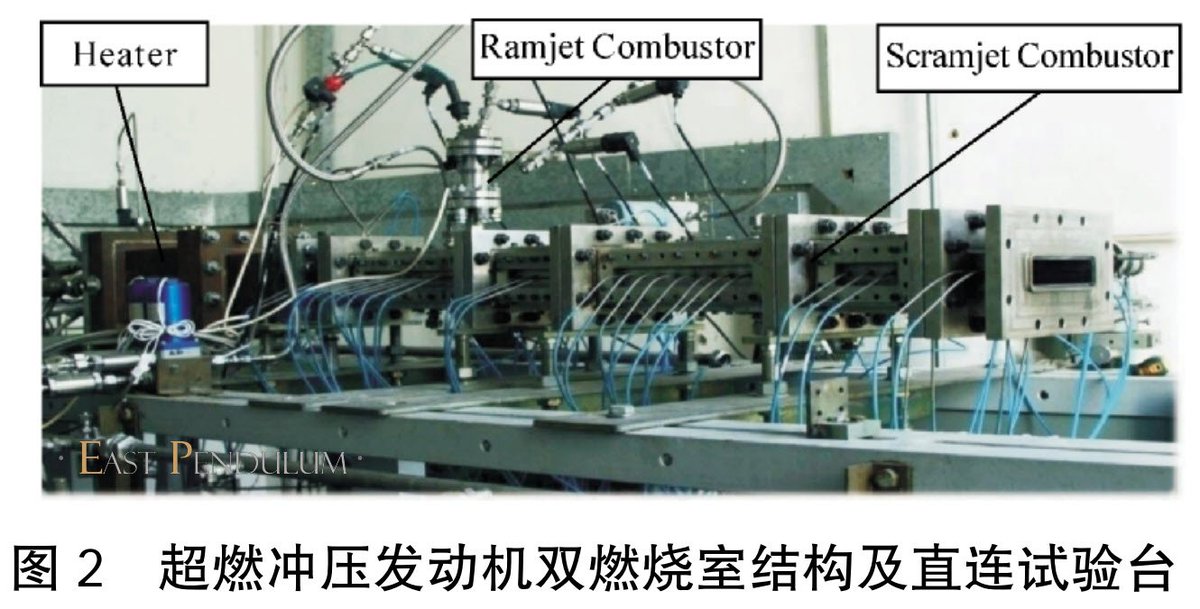
0 replies1 retweet2 likes
Equation
Lieutenant General
- Why does the Xichang Space Center (XSLC) also develop a dual-combustion hydrocarbon propellant scramjet?

0 replies1 retweet2 likes
A space plane to launch their rockets and satellites in two stages instead of a multiple stage rocketry.
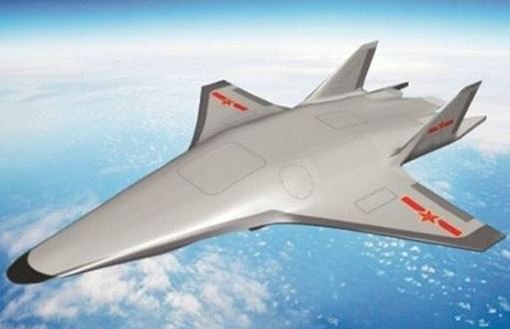
Hendrik_2000
Lieutenant General
CASC Group AALPT conducted a Compound Engine Compatibility Test (RBCC? ATR?) On October 14th.
What is ATR Advanced Turbine Rocket? or TBCC
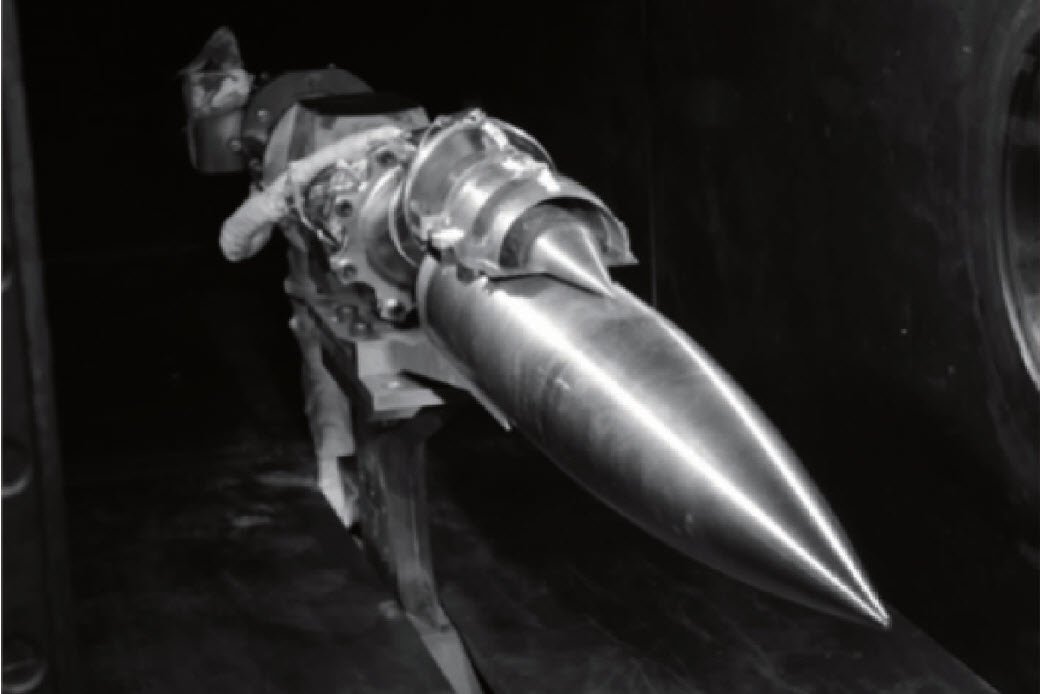
Here is primer on RBCC or Rocket based combined cycle

Rocket Based Combined Cycle (RBCC)
This chart shows the basic arrangement of a Rocket Based Combined Cycle propulsion system. It consists of a ramjet-scramjet and a ducted rocket. The main difference between this propulsion system and the previously mentioned propulsion systems is that this one does not have any turbine engines.
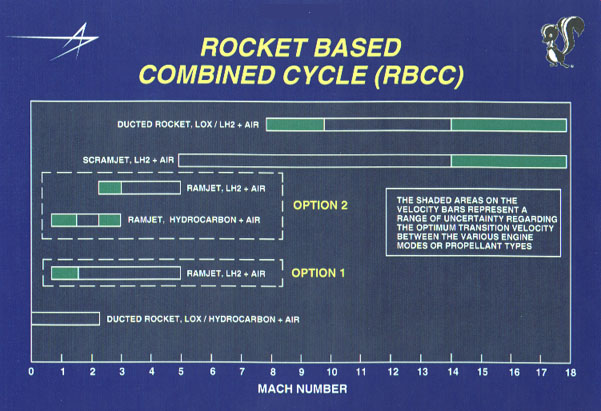
RBCC
This chart shows some of the propulsion and propellant options, along with their respective speed ranges, for a pure Rocket Based Combined Cycle propulsion system.
It takes-off using the liquid oxygen / hydrocarbon ducted rocket only. Additional thrust is generated by the ramjet starting at approximately Mach 0.8.
At approximately Mach 2.2 the ducted rocket is shutdown and the vehicle continues to accelerate using only the ramjet-scramjet.
Somewhere between Mach 8 and Mach 10 the ducted rocket motors are re-ignited with liquid oxygen and liquid hydrogen. The vehicle then continues to accelerate using both the scramjet and the ducted rocket to somewhere between Mach 14 and Mach 18 when both are shutdown. The vehicle will then coast up to its staging altitude of 150 km where the payload with expendable upper stage is released.
Based on our sizing and cost studies to date, the boost phase performance of an RBCC powered HTOHL launch vehicle is very similar to the TRCC powered vehicle.
Unfortunately the RBCC's operational limitations;
1. no subsonic self-ferry capability,
2. extreme engine noise during take-off,
3. and its need for non-standard propellants during ferry operations, make it very unattractive for remote operations from existing commercial airports.
Since ease of operation at existing airports is one of the main reasons for considering the HTOHL configuration in the first place, and since we are getting similar performance from the TRCC powered vehicles without any of these drawbacks, it appears unlikely that the pure RBCC propulsion system will be competitive in a HTOHL vehicle. However, based on the trends we are seeing, we do expect the VTO RBCC powered vehicle to have an advantage over the turbine systems when operating from over water launch sites.
What is ATR Advanced Turbine Rocket? or TBCC

Here is primer on RBCC or Rocket based combined cycle

Rocket Based Combined Cycle (RBCC)
This chart shows the basic arrangement of a Rocket Based Combined Cycle propulsion system. It consists of a ramjet-scramjet and a ducted rocket. The main difference between this propulsion system and the previously mentioned propulsion systems is that this one does not have any turbine engines.

RBCC
This chart shows some of the propulsion and propellant options, along with their respective speed ranges, for a pure Rocket Based Combined Cycle propulsion system.
It takes-off using the liquid oxygen / hydrocarbon ducted rocket only. Additional thrust is generated by the ramjet starting at approximately Mach 0.8.
At approximately Mach 2.2 the ducted rocket is shutdown and the vehicle continues to accelerate using only the ramjet-scramjet.
Somewhere between Mach 8 and Mach 10 the ducted rocket motors are re-ignited with liquid oxygen and liquid hydrogen. The vehicle then continues to accelerate using both the scramjet and the ducted rocket to somewhere between Mach 14 and Mach 18 when both are shutdown. The vehicle will then coast up to its staging altitude of 150 km where the payload with expendable upper stage is released.
Based on our sizing and cost studies to date, the boost phase performance of an RBCC powered HTOHL launch vehicle is very similar to the TRCC powered vehicle.
Unfortunately the RBCC's operational limitations;
1. no subsonic self-ferry capability,
2. extreme engine noise during take-off,
3. and its need for non-standard propellants during ferry operations, make it very unattractive for remote operations from existing commercial airports.
Since ease of operation at existing airports is one of the main reasons for considering the HTOHL configuration in the first place, and since we are getting similar performance from the TRCC powered vehicles without any of these drawbacks, it appears unlikely that the pure RBCC propulsion system will be competitive in a HTOHL vehicle. However, based on the trends we are seeing, we do expect the VTO RBCC powered vehicle to have an advantage over the turbine systems when operating from over water launch sites.
Hendrik_2000
Lieutenant General
via Emperor from CDF
China builds world’s fastest wind tunnel to test weapons that could strike US within 14 minutes
Researchers want new facility to be up and running by 2020 as race to develop hypersonic technology intensifies
PUBLISHED : Wednesday, 15 November, 2017, 9:01pm
UPDATED : Wednesday, 15 November, 2017, 9:30pm
Stephen Chen
China is building the world’s fastest wind tunnel to simulate hypersonic flight at speeds of up to 12 kilometres per second.
A hypersonic vehicle flying at this speed from China could reach the west coast of the United States in less than 14 minutes.
Zhao Wei, a senior scientist working on the project, said researchers aimed to have the facility up and running by around 2020 to meet the pressing demand of China’s hypersonic weapon development programme.
“It will boost the engineering application of hypersonic technology, mostly in military sectors, by duplicating the environment of extreme hypersonic flights, so problems can be discovered and solved on the ground,” said Zhao, a deputy director of the State Key Laboratory of High Temperature Gas Dynamics at the Chinese Academy of Sciences in Beijing.
The ground tests will significantly reduce the risk of failure when test flights of hypersonic aircraft start.
The world’s most powerful wind tunnel at present is America’s LENX-X facility in Buffalo, New York state, which operates at speeds of up to 10 kilometres per second – 30 times the speed of sound.
How Beijing and Taipei are teaming up in space to track earthquakes
Hypersonic aircraft are defined as vehicles that travel of speeds of Mach 5, five times the speed of sound, or above.
The US military tested HTV-2, a Mach 20 unmanned aircraft in 2011 but the hypersonic flight lasted only a few minutes before the vehicle crashed in to the Pacific Ocean.
In March China conducted seven successful test flights of its hypersonic glider WU-14, also known as the DF-ZF, at speeds of between Mach 5 and Mach 10.
Other countries including Russia, India and Australia have also tested some early prototypes of the aircraft, which could be used to deliver missiles including nuclear weapons.
“China and the US have started a hypersonic race,” said Wu Dafang, professor at the school of aeronautic science and engineering at Beihang University in Beijing who received a national technology award for the invention of a new heat shield used on hypersonic vehicles in 2013.
Wu has worked on the development of hypersonic cruise missiles, a near space vehicle, high-speed drones and other possible weapons for the People’s Liberation Army.
He said there were a number of hypersonic wind tunnels in mainland China which had helped ensure the high success rate of its hypersonic weapon tests.
The new wind tunnel will be “one of the most powerful and advanced ground test facilities for hypersonic vehicles in the world”, said Wu, who was not involved in the project.
“This is definitely good news for us. I look forward to its completion,” he added.
In the new tunnel there will be a test chamber with room for relatively large aircraft models with a wing span of almost three metres.
Blast-off for China’s new-generation Beidou-3 satellites to rival GPS
To generate an airflow at extremely high speeds, the researchers will detonate several tubes containing a mixture of oxygen, hydrogen and nitrogen gases for a series of explosions that could discharge one gigawatt of power within a split second, according to Zhao.
This is more than half of the total power generation capacity of the Daya Bay nuclear power plant in Guangdong.
The shock waves, channelled into the test chamber through a metallic tunnel, will envelope the prototype vehicle and increase the temperature over its body to 8,000 Kelvins, or 7,727 degrees Celsius, Zhao said.
That is nearly 50 per cent hotter than the surface of the Sun.
The hypersonic vehicle therefore must be covered by special materials with extremely efficient cooling systems inside the airframe to dissipate the heat, otherwise it could easily veer off the course or disintegrate during a long-distance flight.
The new tunnel would also be used to test the scramjet, a new type of jet engine designed specifically for hypersonic flights. Traditional jet engines are not capable of handling air flows at such speeds.
Zhao said the construction of the new facility would be led by the same team that built JF12, a hypervelocity denotation-driven shock tunnel in Beijing capable of duplicating flight conditions at speeds ranging from Mach 5 to Mach 9 at altitudes between 20 and 50 kilometres.
Jiang Zonglin, lead developer of the JF12, won the annual Ground Test Award issued by the American Institute of Aeronautics and Astronautics last year for advancing “state-of-the-art large-scale hypersonic test facilities”.
Jiang’s JF12 design “uses no moving parts and generates a longer test-duration and a higher energy flow than more traditionally designed tunnels”, according to the American institute.
China tests new spy drones in near space ‘death zone’
According to state media reports, the JF12 tunnel has been operating at full capacity with a new test every two days since its completion in 2012 as the pace of hypersonic weapon development increased significantly in recent years.
In an article published in the domestic journal National Science Review last month, Jiang said the impact of hypersonic flights on society could be “revolutionary”.
“With practical hypersonic aeroplanes, a two-hour flight to anywhere in the world will be possible” while the cost of space travel could be cut by 99 per cent with reusable spacecraft technology, Jiang wrote.
“Hypersonic flight is, and in the foreseeable future will be, the driver of national security, and civilian transportation and space access,” he added.
The escape velocity, or the minimum speed needed to leave the Earth, is 11 kilometres per second.
China builds world’s fastest wind tunnel to test weapons that could strike US within 14 minutes
Researchers want new facility to be up and running by 2020 as race to develop hypersonic technology intensifies
PUBLISHED : Wednesday, 15 November, 2017, 9:01pm
UPDATED : Wednesday, 15 November, 2017, 9:30pm
Stephen Chen
China is building the world’s fastest wind tunnel to simulate hypersonic flight at speeds of up to 12 kilometres per second.
A hypersonic vehicle flying at this speed from China could reach the west coast of the United States in less than 14 minutes.
Zhao Wei, a senior scientist working on the project, said researchers aimed to have the facility up and running by around 2020 to meet the pressing demand of China’s hypersonic weapon development programme.
“It will boost the engineering application of hypersonic technology, mostly in military sectors, by duplicating the environment of extreme hypersonic flights, so problems can be discovered and solved on the ground,” said Zhao, a deputy director of the State Key Laboratory of High Temperature Gas Dynamics at the Chinese Academy of Sciences in Beijing.
The ground tests will significantly reduce the risk of failure when test flights of hypersonic aircraft start.
The world’s most powerful wind tunnel at present is America’s LENX-X facility in Buffalo, New York state, which operates at speeds of up to 10 kilometres per second – 30 times the speed of sound.
How Beijing and Taipei are teaming up in space to track earthquakes
Hypersonic aircraft are defined as vehicles that travel of speeds of Mach 5, five times the speed of sound, or above.
The US military tested HTV-2, a Mach 20 unmanned aircraft in 2011 but the hypersonic flight lasted only a few minutes before the vehicle crashed in to the Pacific Ocean.
In March China conducted seven successful test flights of its hypersonic glider WU-14, also known as the DF-ZF, at speeds of between Mach 5 and Mach 10.
Other countries including Russia, India and Australia have also tested some early prototypes of the aircraft, which could be used to deliver missiles including nuclear weapons.
“China and the US have started a hypersonic race,” said Wu Dafang, professor at the school of aeronautic science and engineering at Beihang University in Beijing who received a national technology award for the invention of a new heat shield used on hypersonic vehicles in 2013.
Wu has worked on the development of hypersonic cruise missiles, a near space vehicle, high-speed drones and other possible weapons for the People’s Liberation Army.
He said there were a number of hypersonic wind tunnels in mainland China which had helped ensure the high success rate of its hypersonic weapon tests.
The new wind tunnel will be “one of the most powerful and advanced ground test facilities for hypersonic vehicles in the world”, said Wu, who was not involved in the project.
“This is definitely good news for us. I look forward to its completion,” he added.
In the new tunnel there will be a test chamber with room for relatively large aircraft models with a wing span of almost three metres.
Blast-off for China’s new-generation Beidou-3 satellites to rival GPS
To generate an airflow at extremely high speeds, the researchers will detonate several tubes containing a mixture of oxygen, hydrogen and nitrogen gases for a series of explosions that could discharge one gigawatt of power within a split second, according to Zhao.
This is more than half of the total power generation capacity of the Daya Bay nuclear power plant in Guangdong.
The shock waves, channelled into the test chamber through a metallic tunnel, will envelope the prototype vehicle and increase the temperature over its body to 8,000 Kelvins, or 7,727 degrees Celsius, Zhao said.
That is nearly 50 per cent hotter than the surface of the Sun.
The hypersonic vehicle therefore must be covered by special materials with extremely efficient cooling systems inside the airframe to dissipate the heat, otherwise it could easily veer off the course or disintegrate during a long-distance flight.
The new tunnel would also be used to test the scramjet, a new type of jet engine designed specifically for hypersonic flights. Traditional jet engines are not capable of handling air flows at such speeds.
Zhao said the construction of the new facility would be led by the same team that built JF12, a hypervelocity denotation-driven shock tunnel in Beijing capable of duplicating flight conditions at speeds ranging from Mach 5 to Mach 9 at altitudes between 20 and 50 kilometres.
Jiang Zonglin, lead developer of the JF12, won the annual Ground Test Award issued by the American Institute of Aeronautics and Astronautics last year for advancing “state-of-the-art large-scale hypersonic test facilities”.
Jiang’s JF12 design “uses no moving parts and generates a longer test-duration and a higher energy flow than more traditionally designed tunnels”, according to the American institute.
China tests new spy drones in near space ‘death zone’
According to state media reports, the JF12 tunnel has been operating at full capacity with a new test every two days since its completion in 2012 as the pace of hypersonic weapon development increased significantly in recent years.
In an article published in the domestic journal National Science Review last month, Jiang said the impact of hypersonic flights on society could be “revolutionary”.
“With practical hypersonic aeroplanes, a two-hour flight to anywhere in the world will be possible” while the cost of space travel could be cut by 99 per cent with reusable spacecraft technology, Jiang wrote.
“Hypersonic flight is, and in the foreseeable future will be, the driver of national security, and civilian transportation and space access,” he added.
The escape velocity, or the minimum speed needed to leave the Earth, is 11 kilometres per second.
Hendrik_2000
Lieutenant General
Hypersonic | The development of a pulsed detonation-wave engine (PDE) is currently underway at Institute 31 of the 3rd Academy of the Chinese aerospace group CASIC.
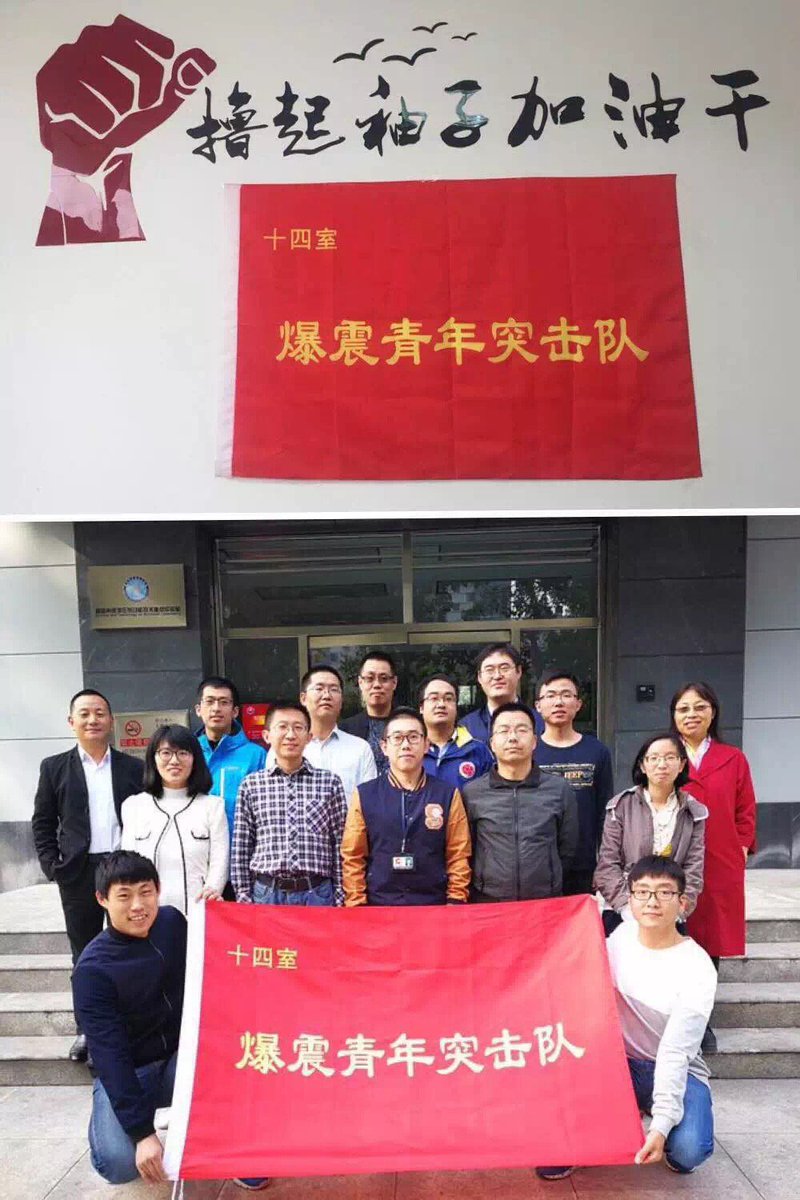

More likely a continuous rotating detonation engine. I posted a few papers at CDFHypersonic | The development of a pulsed detonation-wave engine (PDE) is currently underway at Institute 31 of the 3rd Academy of the Chinese aerospace group CASIC.
Hendrik_2000
Lieutenant General
Via UserUnknow 2025
China is drawing up plans for an aerospace engine plant that would pave the way for the mass production of “hypersonic” planes or spacecraft capable of travelling at more than five times the speed of sound, boosting the country’s competitiveness in defence, space, business and other sectors, according to scientists familiar with the project.
The plant that would be built in Hefei, in China’s eastern Anhui province, could give the country an edge over the United States and Russia in the race to achieve large-scale applications of hypersonic technology, the scientists said.
Hefei deputy mayor Wang Wensong led a delegation to the Institute of Mechanics at the Chinese Academy of Sciences in Beijing last month to discuss the project’s roll-out, according to a statement on the institute’s website.

The Institute of Mechanics, or Imech, is a major developer of hypersonic weapons in China. It studies the behaviour of extremely fast, hot gases – also known as aerothermodynamics – in engine design, using some of the world’s most powerful and sophisticated wind tunnels in its work.
The institute would “join hands” with the Hefei government to build the engine plant, which would be able to operate on a commercial scale when completed, according to the statement on the institute’s website. No completion date for the project was given.
The project would add to Hefei’s growing reputation as China’s “science city”. In the past decade it has become the backdrop for the nation’s first quantum computer and fusion reactor.
The engine project was the result of Beijing’s campaign to use breakthroughs in military technology to stimulate economic growth, according to the institute's statement.
Fan Xuejun, head of Imech’s “scramjet” division – focused on using high vehicle speed to compress incoming air forcefully before combustion – was lead scientist for the project.
Fan told the Post that the plant would make engines in a range of models for customers in military and civilian sectors.
Scramjet, short for “supersonic combustion ramjet”, is a high-speed propulsion technology that could cut flying time from Shanghai to New York to just two hours – a fraction of the almost 15 hours a commercial passenger plane takes to cover that distance.
Fan declined to discuss the design of the engine that would be made in Hefei. But he said one of its uses could be as the power source for space missions.
“The purpose is to cut the cost of space launches,” he said. “It is similar to [the goal of] SpaceX, but we are taking a completely different approach.”
SpaceX, a private US space company founded by entrepreneur Elon Musk, has developed recovery technology that can return rockets to Earth for reuse. It seeks to cut the per-kilogram cost of space launches to just thousands of US dollars from tens of thousands of US dollars.
A government-funded company is to be established soon to build and operate the Hefei plant, according to Fan. In the future it could sell shares to private investors.
Project details would not to be released to the public until the business entity was officially established, he said.
HOW THE ENGINE WORKS
Some analysts said they believed the Hefei-produced engine could be a variant of a rocket-based combined cycle system under intensive testing at Imech’s ground facility in Huairou, Beijing.
The system could use a conventional turbine engine for take-off and acceleration to supersonic speed – faster than the speed of sound – then fire up the scramjet to reach hypervelocity. A rocket would give the vehicle a final push to bring it up to orbital height.
Researchers familiar with the project agreed that the engine, which puts three different types of propulsion technology in one package, could indeed significantly reduce the cost of space flight.

Conventional space launches are carried out using rockets. A rocket engine not only must carry fuel such as kerosene or hydrogen but also a large tank of oxygen, possibly increasing the overall weight of fuel at launch by nearly a third.
Most rockets either crash in the ocean or burn up in the atmosphere after use, adding to the cost of space flight.
The scramjet technology could allow a projectile to achieve rocket-like speed without the burden of an oxygen tank.
A scramjet-driven spacecraft could breathe in the thin oxygen of the upper atmosphere. It could also return to Earth and touch down on an airstrip like a normal plane.
But harnessing scramjet technology for a practical space application has proven to be extremely complex and difficult to achieve. Scientists have compared the effort to control the combustion in a scramjet engine to keeping a candle lit in the teeth of a hurricane.
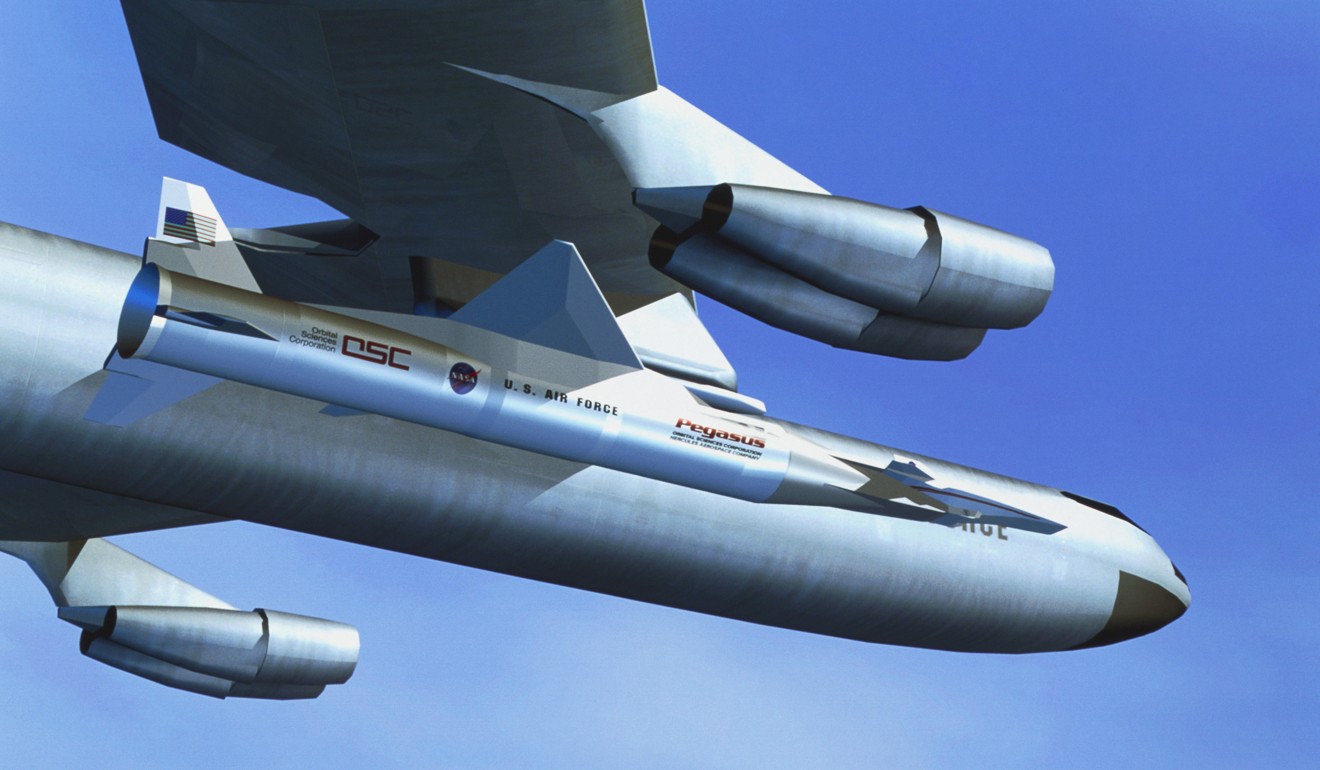
With air moving into the engine at an extremely fast rate, a tiny jolt in fuel supply, for instance, could extinguish the combustion in the engine and lead to the vehicle’s crash.
Scientists in the hypersonic research community believe that Russia, the US and China have recently overcome the technical hurdles and achieved the long term, stable operation of scramjet engines.
In contrast, India, which tested a pair of scramjet engines mounted on a two-stage rocket in 2016, managed to keep the burning going for just five seconds.
China and the US could be neck and neck in the race to achieve a mass application of hypersonic technology, but both countries remain a step or two behind Russia, according to Liu Hong, an award-winning hypersonic scientist at the school of aeronautics and astronautics at Shanghai Jiaotong University.
In March, Russian President Vladimir Putin said his country’s military had deployed the world’s first hypersonic weapon system. The intercontinental hypersonic missile, Putin said, would fly to targets at 20 times the speed of sound.
“Putin is telling the truth,” Liu said. Though the hypersonic weapon tests in the US and China received the most media coverage, it was generally agreed among researchers that “the Russians are the leader in this field”, he said.
ITS PRACTICAL APPLICATIONS
The rocket-based combined cycle system could be the first hypersonic power source to be applied in real life because it had been developed and tested for many years, according to Liu.
“If [the Hefei plant] is taking the approach, which is relatively simple and mature, I think their goal for commercial production is possible. It is within the reach of current technology,” he said.
The Institute of Mechanics is not alone in its endeavour to understand and develop hypersonic vehicle technology.
In China, at least four or five major state-owned companies or government organisations also have unveiled ambitious plans to make use of hypersonic flight science, according to Liu.

In 2016, China Aerospace Science and Technology Corp said it was developing a hybrid space plane that would take off and land in a normal airport with a combined cycle engine.
Hendrik_2000
Lieutenant General
(cont)
Its major rival, China Aerospace Science and Industry Corp, launched a similar project called Teng Long, or soaring dragon, soon afterward.
In early March, the China Aerodynamics Research and Development Centre, the hypersonic weapon development branch of the People’s Liberation Army in Mianyang, Sichuan province, announced a successful test of a prototype spacecraft in the Gobi Desert, in Inner Mongolia. The vehicle was believed to be a hypersonic space plane.
Each player in the hypersonic vehicle race “has a unique technological advantage”, Liu said.
“In the end I believe the government will scoop the cream of the technology of each project and put them together to build a high-performance vehicle,” he said.
The market demand for the hypersonic space vehicle could be big enough to create a multibillion-yuan business.
“If it can save 10 tonnes of fuel for each launch, which is already a very conservative amount, orders will fly in,” Liu said.
The impetus for China’s hypersonic programmes initially came from its defence sector. The military’s leaders salivated at the idea of a high-speed vehicle that could penetrate any existing missile defence system, strengthening China’s nuclear deterrence capability.
Rapid advancement in hypersonic technology in recent years also has sparked interest in its potential application in non-military sectors, Liu said.
For instance, space planes could bring satellites into orbit or establish a global communication network – all at low cost.
Doing so could bring cheap or even free Wi-fi to everyone, anywhere. Such an accomplishment would benefit Chinese businesses such as internet and mobile phone companies, as well as the increasing number of Chinese citizens travelling overseas, according to Liu.
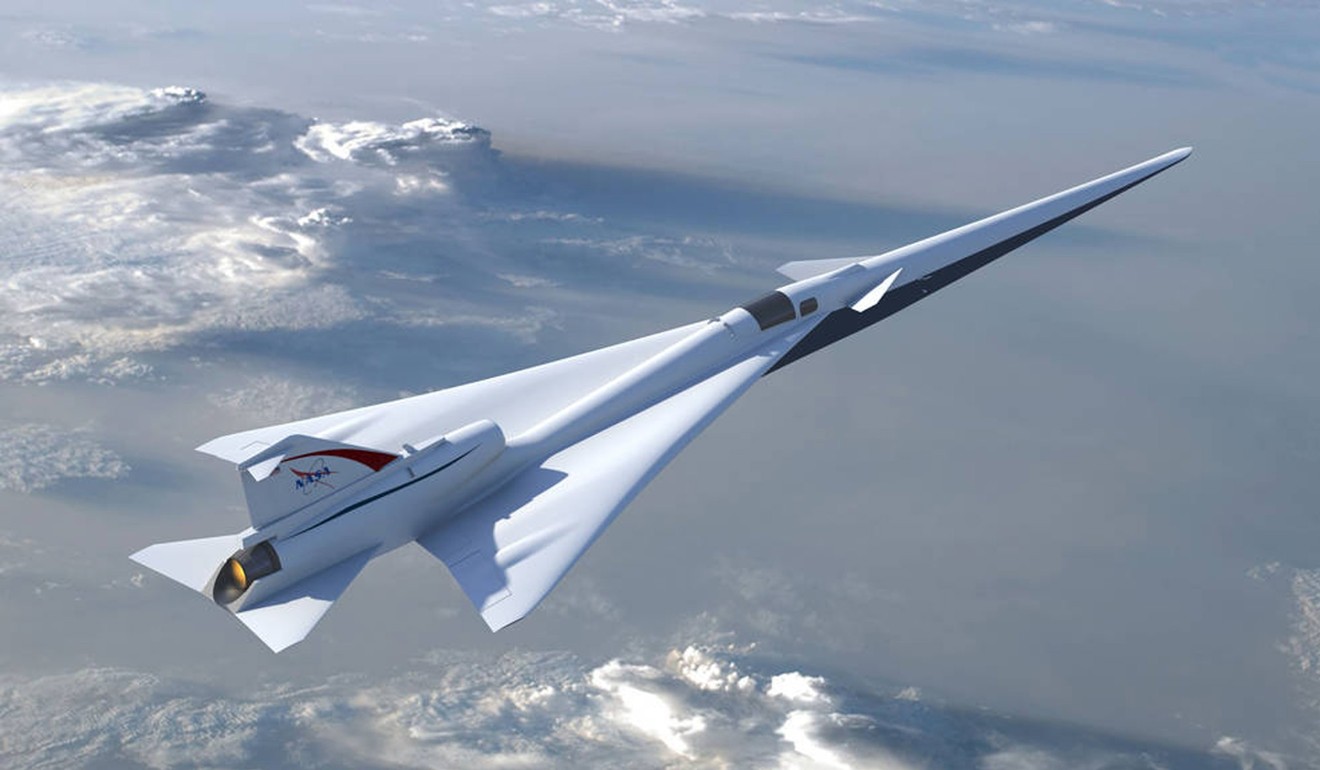
Beijing’s launch of its massive infrastructure plan – the “Belt and Road Initiative” – would be impossible without the support of space-based facilities, he said.
Liang Xiaohong, former party secretary of the China Academy of Launch Vehicle Technology, has said that the value of potential orders for satellites and space-related services from Beijing and China’s business sectors is estimated at 1 trillion yuan (US$159.32 billion).
The figures reflected China’s desperate need for reliable, low-cost launch vehicles, Liang said.
Although production lines for China’s existing Long March rockets supported about 35 launches per year – on par with the US – the output could not meet the country’s huge demand for satellites, he said.
Its major rival, China Aerospace Science and Industry Corp, launched a similar project called Teng Long, or soaring dragon, soon afterward.
In early March, the China Aerodynamics Research and Development Centre, the hypersonic weapon development branch of the People’s Liberation Army in Mianyang, Sichuan province, announced a successful test of a prototype spacecraft in the Gobi Desert, in Inner Mongolia. The vehicle was believed to be a hypersonic space plane.
Each player in the hypersonic vehicle race “has a unique technological advantage”, Liu said.
“In the end I believe the government will scoop the cream of the technology of each project and put them together to build a high-performance vehicle,” he said.
The market demand for the hypersonic space vehicle could be big enough to create a multibillion-yuan business.
“If it can save 10 tonnes of fuel for each launch, which is already a very conservative amount, orders will fly in,” Liu said.
The impetus for China’s hypersonic programmes initially came from its defence sector. The military’s leaders salivated at the idea of a high-speed vehicle that could penetrate any existing missile defence system, strengthening China’s nuclear deterrence capability.
Rapid advancement in hypersonic technology in recent years also has sparked interest in its potential application in non-military sectors, Liu said.
For instance, space planes could bring satellites into orbit or establish a global communication network – all at low cost.
Doing so could bring cheap or even free Wi-fi to everyone, anywhere. Such an accomplishment would benefit Chinese businesses such as internet and mobile phone companies, as well as the increasing number of Chinese citizens travelling overseas, according to Liu.

Beijing’s launch of its massive infrastructure plan – the “Belt and Road Initiative” – would be impossible without the support of space-based facilities, he said.
Liang Xiaohong, former party secretary of the China Academy of Launch Vehicle Technology, has said that the value of potential orders for satellites and space-related services from Beijing and China’s business sectors is estimated at 1 trillion yuan (US$159.32 billion).
The figures reflected China’s desperate need for reliable, low-cost launch vehicles, Liang said.
Although production lines for China’s existing Long March rockets supported about 35 launches per year – on par with the US – the output could not meet the country’s huge demand for satellites, he said.
